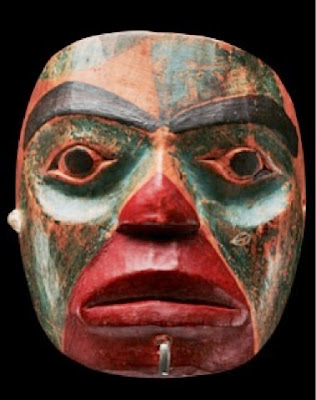From yee Wiki:
Masks among Eskimo peoples served a variety of functions. Masks were made out of driftwood, animal skins, bones and feathers. They were often painted using bright colors. There are archeological miniature maskettes made of walrus ivory, coming from early Paleo-Eskimo and from early Dorset culture period.
Despite some similarities in the cultures of the Eskimo peoples, their cultural diversity makes it hard to generalize how Eskimos and Inuit used masks. The sustenance, mythology, soul concepts, even the language of the different communities were often very different.
Although beliefs about unity between human and animal did not extend to that of absolute interchangeability, several Eskimo peoples had sophisticated soul concepts (including variants of soul dualism) that linked living humans, their ancestors, and their prey.
Besides synchronical beliefs, there were also notions of unity between human and animal, and myths about an ancient time when the animal could take on human form at will.
Traditional transformation masks reflected this unity. Ritual ceremonies could enable the community to enact these stories with the help of masks, sometimes with the masked person representing the animal.
Eskimo groups comprise a huge area stretching from Siberia through Alaska and Northern Canada (including Nunatsiavut in Labrador and Nunavik in Quebec) to Greenland.
The term Eskimo has fallen out of favor in Canada and Greenland, where it is considered pejorative and the term Inuit has become more common. However, Eskimo is still considered acceptable among Alaska Natives of Yupik and Inupiat (Inuit) heritage, and is preferred over Inuit as a collective reference.






No comments:
Post a Comment